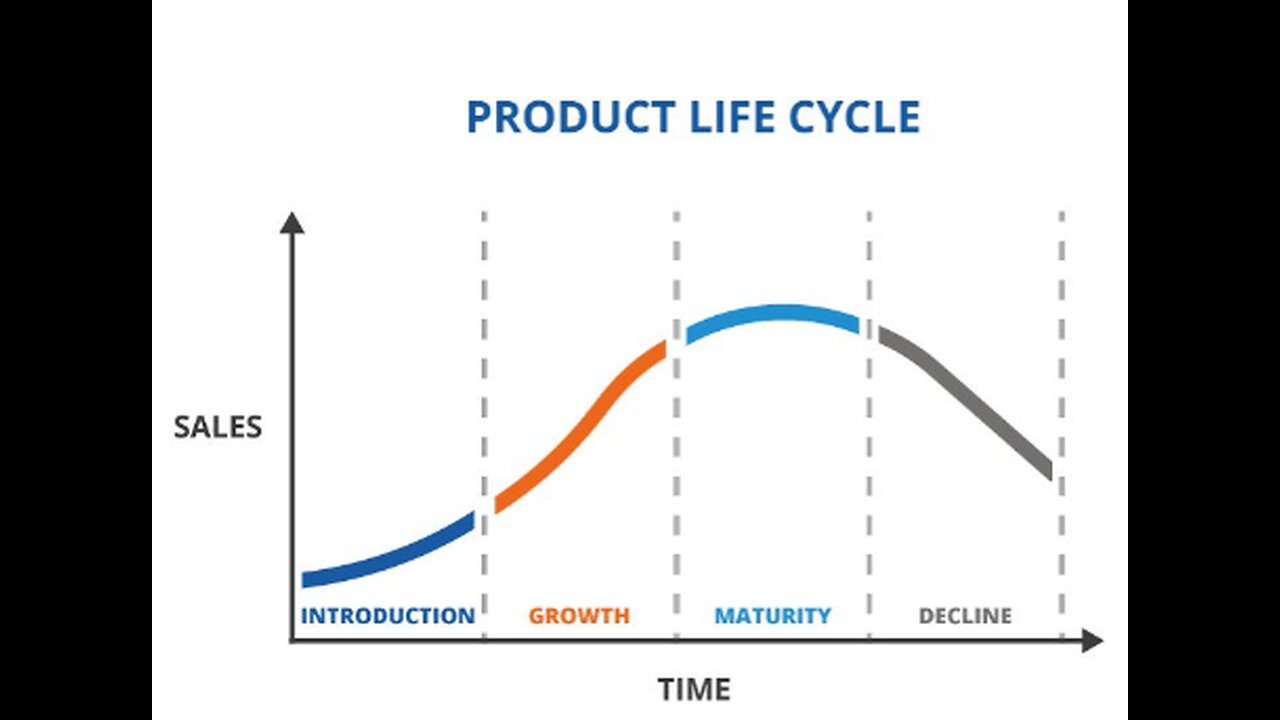Premium Only Content

Topic-Product Life Cycle (Sub-Marketing Paper)
The product life cycle is a concept used in marketing and product management to describe the stages a product goes through from its introduction to its eventual withdrawal from the market. It illustrates the evolution of a product's sales and profitability over time and helps businesses understand the different challenges and strategies required at each stage. The typical product life cycle consists of four main stages:
Introduction: This is the initial stage when a product is first introduced to the market. Sales are typically low at this point as consumers are just becoming aware of the product. Companies invest heavily in marketing and promotion to create awareness and stimulate demand. During this stage, the product may incur significant development and marketing costs.
Growth: In this stage, the product experiences rapid sales growth as more consumers become aware of its benefits. Positive word-of-mouth, effective marketing, and distribution strategies contribute to increasing sales. The product gains acceptance in the market, and profits start to rise. Competitors may enter the market during this phase, increasing competition.
Maturity: The maturity stage is characterized by stable sales and market saturation. The product has reached its peak level of adoption, and sales growth levels off. During this stage, competition is intense, and companies may focus on product differentiation or improving features to maintain their market share. Price competition may become more prominent during this phase.
Decline: In the decline stage, sales start to decrease as consumer interest wanes, or new, innovative products enter the market, rendering the current product less attractive. Companies may decide to discontinue the product or reduce marketing efforts significantly. If the product still holds value for a niche market, it may continue to generate some sales, but its overall market share diminishes.
It is essential for companies to recognize which stage their product is in to devise appropriate strategies. They may consider diversifying their product offerings, targeting new customer segments, or repositioning the product in the market. Understanding the product life cycle helps businesses plan for the future, allocate resources wisely, and make informed decisions to optimize the product's overall performance and profitability.
-
 LIVE
LIVE
Times Now World
3 hours agoLIVE News | “Diplomacy of Cannons Is Over” – Maduro Challenges Washington | Times Now World
1,484 watching -
 1:09:09
1:09:09
Dialogue works
1 day ago $0.28 earnedScott Ritter: NATO is FINISHED
6.42K4 -
 LIVE
LIVE
FyrBorne
12 hours ago🔴Warzone M&K Sniping: I Can Be Your Idol (For Sniping)
142 watching -
 LIVE
LIVE
The Real Tombliboos - Live Streaming
5 hours ago🔴CHARITY DRIVE🔴12 HOURS🔴Extra Life Charity🔴#ExtraLife #extralife4kids - Round 1
58 watching -
 17:54
17:54
Dr Disrespect
20 hours agoDR DISRESPECT vs VAN DAMME in Hitman 3
91.5K11 -
 34:26
34:26
CarlCrusher
13 hours agoJake Paul's Crew vs Ancient Skinwalker Canyon
24.3K2 -
 16:07
16:07
Chris From The 740
1 day ago $0.76 earnedMy BIGGEST Problem with the Ruger RXM – FIXED by Liberty Build Co!
15.3K1 -
 13:29
13:29
Professor Gerdes Explains 🇺🇦
13 hours agoUS Deploys Warships to Venezuela's Coast: A Show of Force Against Putin's Ally
14.6K1 -
 12:12
12:12
The Shannon Joy Show
14 hours ago🔥Carcinogens & Fetal Cells In Your New ‘Universal Vaccine’🔥
14.1K2 -
 10:38
10:38
ariellescarcella
13 hours agoOnlyFans Models Fake Being Trans : Queer Activists Are PISSED
10.8K9